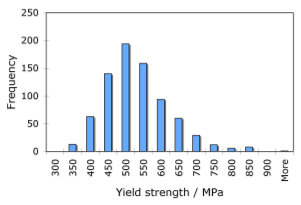

There are many steels which are stronger than 2000 MPa, with toughness values exceeding 100 MPa m1/2 and which have been in commercial service for many decades. Examples include the marageing alloys and carbide-free bainitic steels. By contrast, welding consumables with a proof strength in excess of 1000 MPa are few and far between. This is because whereas wrought steels can be thermomechanically processed to optimise their performance, most weld metals have to used in the as-cast condition and with impurity concentrations which are greater than is desirable. The weld metal can readily be made strong but without an accompanying ability to absorb energy during fracture, it cannot be used in practice. A variety of experimental and theoretical approaches towards stronger weld metals are assessed here. The modern trend has been towards low-carbon mixed microstructures of bainite and martensite. This is because none of the other phases such as allotriomorphic ferrite and WidmanstŠtten ferrite are capable of the required strength. Conventional wisdom that the toughness of martensite can be enhanced by increasing the nickel concentration has in general proved to be unreliable. Nickel is effective only when the manganese concentration is kept to a minimum. The mechanism of the synergy between manganese and nickel is discussed in the light of recent high-resolution experiments conducted at Chalmers University and ESAB in Sweden.
Materials Science Forum Volume 539-543, Issue PART 1, 2007, Pages 6-11.

| CML Home | Materials Algorithms |